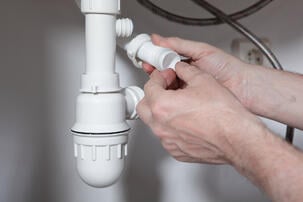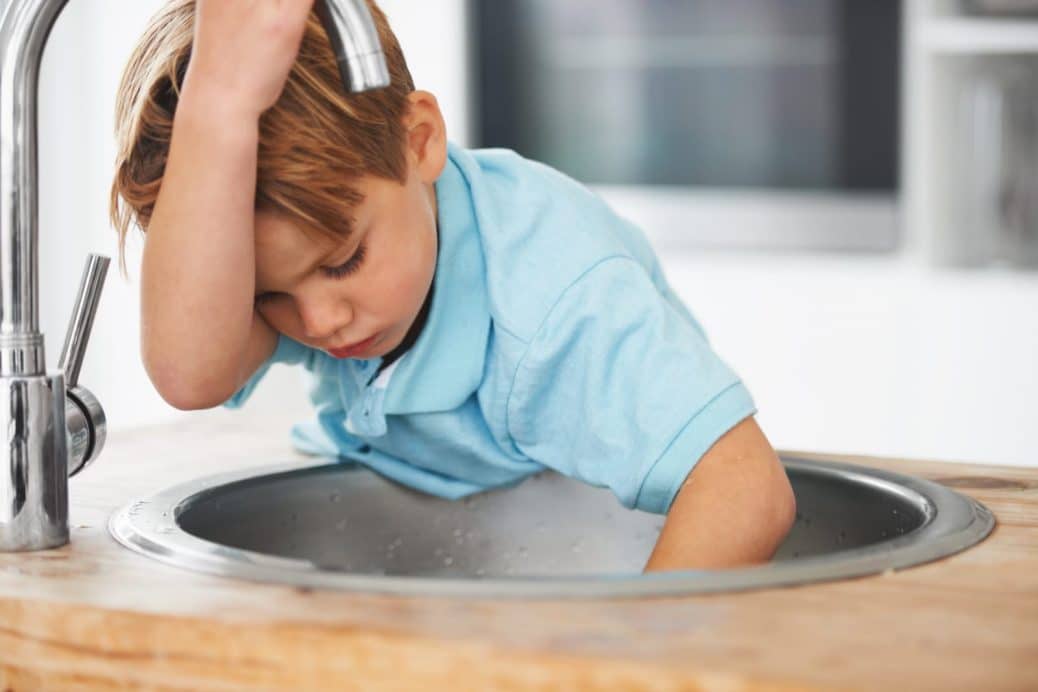Unpacking the Basics of Home Plumbing: A Beginner's Manual
Unpacking the Basics of Home Plumbing: A Beginner's Manual
Blog Article
On this page on the next paragraphs yow will discover additional really good advice related to What to Know About Plumbing: Basics, Tips, and Insights.

Plumbing is an important element of any type of home, in charge of providing clean water for drinking, food preparation, and showering, along with eliminating wastewater safely. Comprehending the basics of home plumbing is important for every house owner to make sure appropriate maintenance, troubleshooting, and, if essential, fixings. In this novice's guide, we'll cover the basic ideas of home plumbing to assist you become extra accustomed to exactly how it works.
Water System
The water system brings clean water right into your home from a local water resource or a personal well. It consists of a major water line that links to your home's plumbing system, usually situated underground. A water meter measures the quantity of water consumed, while a shut-off shutoff permits you to manage the flow of water into your home.
Plumbing Components
Plumbing fixtures are tools that provide water to numerous parts of your home and include sinks, taps, commodes, showers, bathtubs, and devices such as dishwashing machines and cleaning devices. Each component is connected to the water system system via pipelines and installations and might have its shut-off valve for upkeep or emergency situations.
Water Heating Unit
The water heating system is accountable for home heating water for domestic use, including showering, cooking, and cleaning. Typical sorts of water heaters include tank-type hot water heater, tankless (on-demand) water heaters, and heat pump water heaters. The water heater is attached to the water supply system and provides warm water to plumbing components as needed.
Drainage System
The drain system gets rid of wastewater from your home and brings it away to a sewer therapy facility or septic system. It includes a network of pipelines, installations, and components that transfer wastewater from plumbing fixtures to the main sewage system line or sewage-disposal tank. Appropriate water drainage is essential to protect against clogs, backups, and sewage leakages.
Air flow System
The air flow system assists keep proper air pressure and protect against sewer gases from entering your home. Vent pipes, likewise known as vent stacks, extend from plumbing components to the roof, allowing drain gases to get away securely outside. Ventilation pipes also allow air to get in the water drainage system, facilitating smooth wastewater circulation and preventing suction or vacuum cleaner results.
Usual Plumbing Devices
Having the right devices handy is vital for doing fundamental plumbing repair work and maintenance tasks. Usual plumbing devices include adjustable wrenches, pipe wrenches, pliers, pipeline cutters, hacksaws, bettors, augers (or drainpipe snakes), and Teflon tape. Having these tools conveniently offered can assist you deal with minor plumbing concerns effectively.
Basic Plumbing Repairs
While some plumbing repairs might call for expert support, many usual problems can be addressed with fundamental DIY strategies. Discovering exactly how to fix a dripping tap, unclog a drainpipe, replace a commode flapper, or repair a trickling showerhead can conserve you time and money on plumbing fixings.
Final thought
Understanding the essentials of home plumbing is necessary for every house owner to maintain a secure, practical, and reliable plumbing system. By familiarizing on your own with the water system system, plumbing fixtures, drain system, ventilation system, common plumbing devices, and basic repair services, you can confidently resolve minor plumbing problems and ensure your home's plumbing system operates efficiently.
Plumbing for Beginners: A Comprehensive Guide
If you’re a beginner when it comes to plumbing, don’t worry; you’re not alone. Plumbing may seem intimidating, but with the right knowledge and a little practice, you can handle many common plumbing issues on your own. In this comprehensive guide, we will demystify the world of plumbing for beginners, providing you with the basic knowledge and skills needed to tackle common plumbing problems and even take on some DIY plumbing projects.
The Importance of Basic Plumbing Knowledge for Beginners:
First and foremost, basic plumbing knowledge gives you a solid foundation. It helps you grasp the key concepts and terminology that are essential in this field. By learning the basics, you’ll be able to build upon that knowledge and tackle more complex plumbing tasks in the future.
Having a basic understanding of plumbing also enables you to handle common issues that may arise in your home. Picture this: a leaky faucet or a clogged drain. With some basic plumbing knowledge, you’ll have the confidence to troubleshoot and fix these problems on your own. It saves you from unnecessary expenses and the hassle of waiting for a professional to arrive.
As a beginner, learning the basics of plumbing empowers you to take care of your own home. It gives you a sense of independence and self-reliance. You’ll no longer have to rely solely on professionals for every small issue that pops up. Instead, you can handle many tasks yourself, saving time and money in the process.
Remember, everyone starts as a beginner. Embrace the learning process and take small steps to expand your plumbing knowledge. There are plenty of online resources, tutorials, and even local workshops that talk about plumbing for beginners.
Essential Tools for Plumbing for Beginners
As you start your plumbing journey, having the right tools in your toolbox is crucial. Let’s explore some of the must-have tools:
Adjustable Wrench:
This versatile tool is a staple in any plumber’s toolbox. It allows you to tighten or loosen nuts and bolts of various sizes. Make sure to have an adjustable wrench with a comfortable grip.
Pipe Wrench:
A pipe wrench is specifically designed for gripping and turning pipes. It has serrated jaws that provide a strong grip, making it easier to loosen or tighten threaded pipes and fittings.
Plunger:
The plunger is a simple yet effective tool for clearing clogged drains and toilets. It creates suction when you push and pull, helping to dislodge blockages. Keep a good-quality plunger handy for those unexpected clogs.
Pipe Cutter:
When it comes to cutting pipes, a pipe cutter is your go-to tool. It creates clean, precise cuts without damaging the pipe. Look for a pipe cutter that can handle the pipe sizes you’re working with.
Hacksaw:
A hacksaw is useful for cutting through pipes, screws, and other materials. It’s a versatile tool that can handle different cutting tasks. Remember to use a blade suitable for cutting metal.
Tape Measure:
Accurate measurements are crucial in plumbing. A tape measure allows you to measure pipe lengths, distances, and dimensions accurately. Opt for a sturdy tape measure that extends a good length.
Pliers:
Pliers come in handy for various tasks, such as gripping, bending, and cutting. Slip-joint pliers with adjustable jaws are great for gripping pipes, nuts, and bolts.

As an avid reader on What to Know About Plumbing: Basics, Tips, and Insights, I thought sharing that portion was really helpful. If you enjoyed our blog entry please make sure you remember to pass it around. Many thanks for your time. Please check our blog back soon.
Book Appointment Report this page